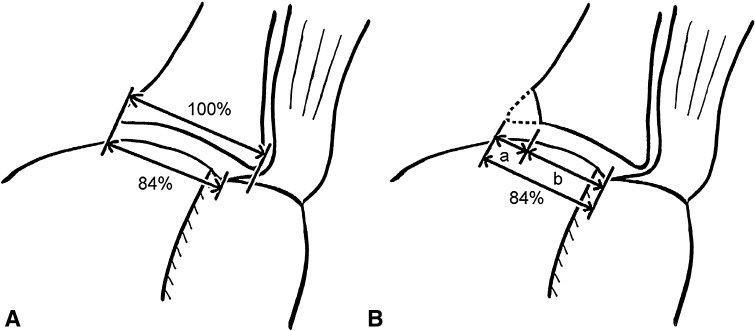Fig. 2A–B.
(A) This is a drawing of the glenoid track. Notice the glenoid pushes the cuff tendon at its insertion by 16% of the glenoid width, leaving the remaining 84% covering the articular surface of the humeral head. (B) This is a similar drawing as (A); however, note the large glenoid defect decreasing the total width of the glenoid track. In a case with a bony defect of the glenoid, the defect width (a) should be subtracted from the 84% length to obtain a true glenoid track width (b) in this shoulder. Reprinted with permission from Yamamoto N, Itoi E, Abe H, Minagawa H, Seki N, Shimada Y, Okada K. Contact between the glenoid and the humeral head in abduction, external rotation, and horizontal extension: a new concept of glenoid track. J Shoulder Elbow Surg. 2007;16:649–656.

